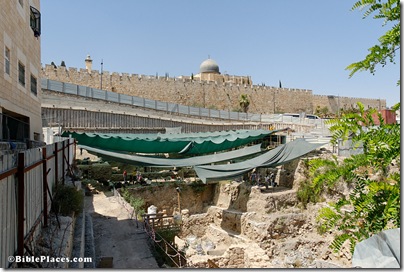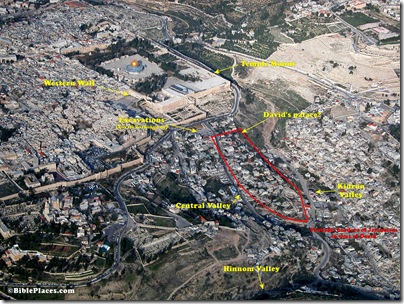With regard to the Khirbet Qeiyafa inscription, there are those who know and those who don’t. Those who know have been sworn to secrecy, leaving only those of us who don’t know to speculate. I am happy to oblige and suggest below some reasons on why this inscription is significant, thereby possibly fueling more speculation by others also in the dark.
What is not speculation is the fact that the inscription is being studied by Haggai Misgav, a Northwest Semitic epigraphist (source). Given the location of its discovery, this is no surprise, but it clearly rules out the possibility that inscription was written in another language. Misgav Haggai says at present that his conclusions are “doubtful and temporary” and he does not know when he will be ready to publish (reported by Jim West). That suggests that the inscription is difficult. I offer some ideas that may explain archaeologist Aren Maier’s comment that this inscription “is going to be
VERY INTERESTING!!!!”
1. The inscription is long. This is a guess based upon a photograph of the potsherd and a friend’s report that the inscription is 4-5 lines long. Too many inscriptions are known only from a small portion preserved. The recent ostracon found at Gath with a name similar to Goliath received much attention, but it contained only two words.
2. The inscription is meaningful. This is in contrast to other early inscriptions, such as the Tel Zayit abecedary (10th c.) and the Izbet Sartah abecedary (11th c.). Certainly alphabetic inscriptions are meaningful, and scholars can write much about them. But the primary reason why they get so much attention is because there are few other contemporary inscriptions. Sometimes conclusions about the state of writing are made that may be without warrant. The combination of a brief or ambiguous text with a lack of contemporary material makes possible many wrong interpretations.
3. The inscription was discovered in a stratified context. This is in contrast to the Gezer Calendar,
which was found in the debris pile in 1908. The Tel Zayit abecedary was found in a wall, not in its original context. Archaeologists do not have a clear stratigraphical context for many important inscriptions.
4. The inscription is early. Khirbet Qeiyafa has occupation from the 10th century and then a gap until the Hellenistic period (2nd c.). The inscription certainly dates to the time of the settlement, which guarantees a 10th century date (assuming that the site itself has been correctly dated). There are very few 10th century inscriptions in Israel, and all have some problems. (The only 10th c. inscriptions from Israel that come to mind are the Gezer Calendar, Tel Zayit abecedary, and the Shishak inscription, but there are probably others.) The significance of an inscription increases exponentially each century that you go back in time. A seal impression in the city of David from the 6th century is less rare and thus less valuable than a letter or poem from the 10th century.
5. The inscription dates to a period now highly controversial in biblical archaeology. In the mid-1990s Israel Finkelstein proposed a “Low Chronology,” which essentially re-dated all material believed to be from the 10th century to the 9th century. The poor material culture from the 11th century was brought down to the 10th century. Historically, then, Israel and Judah were impoverished and weak, or, more likely, non-existent (according to Finkelstein) at the time when the Bible describes the great United Monarchy. Like so many theories in biblical archaeology, this one is highly dependent upon a large amount of “white space,” in which one’s own ideas can be inserted.
Almost certainly this new inscription will fill in some of the gaps, as well as spawn its own controversies.
More speculating remains to be done on the site identification of Khirbet Qeiyafa, but that will need to await a future post.

